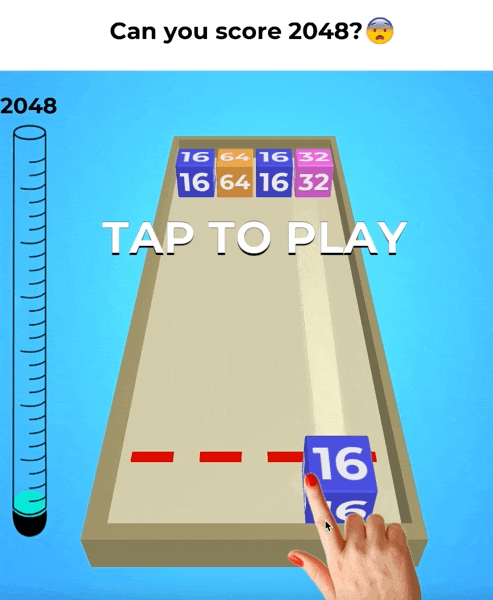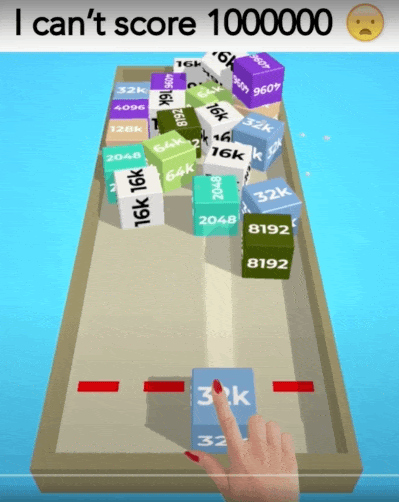Marketing creatives 101: how to attract players
Marketing creatives is something you’re always going to need, whether you want to test ideas on a real audience before release, or to scale and get the most out of the project after it comes out. For example, we release about 150 videos a week in addition to banners and playable ads. In these conditions, outsourced production of a single ad creative can cost from several hundred to thousands of dollars.
Today we’ll talk about the places to get ideas from, best approaches to production, and minimizing the risk of losing money on low-quality creatives.
Post summary:
1. How to start making creatives?
2. How to analyze competitors?
3. What are the current trends?
4. How to choose a target audience?
5. What is ad creative burnout?
6. Are misleading ads acceptable?
7. Case study: how an ad creative influenced actual gameplay
8. Tips and tricks
Let’s get it.
How to start making creatives?
You don’t start making creatives by actually making them. The first thing you need to do is play games and watch ads — nothing is better for getting visual experience and tracking trends.
If you see different publishers using the same ad creative idea, it’s a sure sign that it works.
I think everyone has noticed that ads in mobile games often look similar to each other. The reason this keeps happening isn’t the lack of imagination, but the fact that these creatives perform best at a given moment in time. Large companies have serious professionals on their marketing and analytics teams, so they know what they’re doing. However, trends can change at any moment, and market analysis should never stop.
Be careful if your direct competitors use misleading ads on a large scale. The stores have already started to fight them, and your competitors might’ve acquired the entire target audience already, and they’re doing these things in order to find new players.
But what if you came up with a unique mechanic and have no competitors? The answer is simple:
Showing real gameplay — no sugarcoating, no effects, or even color grading — is always a good start, especially for hypercasual games.
How to analyze competitors?
There are special analytical services that let you view other people’s creatives, like AppMagic, AppAnnie, Sensor Tower, Apptica. They all have their own advantages, for example, AppMagic is great for comparing advance and decline of downloads and revenue in order to then compare them with the ads in rotation.
Facebook also recently allowed free access to ads from other companies. The data is very accurate and you can see all the ads launched from the page. There’s no way to find out what creative performed the best, which is definitely a minus, but not the end of the world. When everyone started to produce room repairing ads, it became obvious that they worked well.
Make a list of the top 5 competitors that have a lot of ads and do something similar to their stuff. Start implementing your own ideas into these ads only after you get the results and gain experience. This point is very important, because a blind search for a marketing goldmine can cost you a lot in more ways than one.
There are even companies that rely entirely on copying competitors, and it’s a great way to get creatives that will perform well at a minimum cost. The only downside is that if there are no resources to test your own ideas, you won’t be able to be the first to release an ad creative that will get everyone’s attention.
What are the current trends?
One of the current trends that’s worth mentioning are endcards, which are rapidly gaining popularity and don’t require adapting the content to them.
We have an indicative case with Chain Cube (by the way, we already have an article about the development of this game). We made endcards based on top ad creatives, used all of the best-performing elements, and launched them on the same ad channel. As a result, the spend has doubled.

Endcards were just static pictures before, but nowadays simplified variations of playable ads — one or two clicks for the players to move on quickly — are the most common.
When the player in the gameplay clip makes mistakes, wrong moves and wrong decisions, or thinks for too long also works well.
This the entire hypercasual audience loves it, but there’s a catch: these types of videos require a delicate balance you can get a sense of only if you practice enough. You need to create a feeling that there was an attempt to win, albeit unsuccessful, and the viewer must get a clear picture of what needed to be done to succeed. If you make it too difficult, don’t leave any hints or make the attempt extremely stupid, users won’t have an incentive to go and do it “right”.
There are even more unusual cases, like when a certain random sound suddenly becomes trendy in ads. For example, we added chomping noises to the Chain Сube and WormsZone ad creatives. These are completely different genres and target audiences, but the results were good for both games.
How to choose a target audience?
Contrary to popular belief, a project doesn’t always have to be tied to a target audience.
Hypercasual games often use general themes for all projects. For example, popular things — famous characters like imposters or Siren Head, recognizable tunes or hints to them, or references to popular TV shows like Squid Game — work very well.

Things are a little different with midcore games. Let’s take a look at shooters, since we have a lot of experience in this genre. Three concepts work best:
- seamless level walkthrough;
- paced gameplay highlights with soundtrack;
- and walkthroughs with more expensive and visually effective gameplay than the game itself can offer.
No hard misleads — a shooter remains a shooter, just in a beautiful shell of improved graphics, unique animations and other elements that don’t affect the essence of the game.
It doesn’t make much sense to make separate ads for the highest paying countries when you target a wide audience. Usually, these regions acquire the best ad creatives the most anyway, with some rare exceptions. WormsZone was one of those exceptions: most of the downloads and the highest ad spend were happening in countries like Thailand and Indonesia.
What is ad creative burnout?
Regardless of how good your ad creative is, eventually you’ll have to face a new problem: it will burn out. Millions of players watched the ad, the ones that wanted to play had already clicked on it, and the rest are only going to get annoyed by having to watch the same ad time and time again. This is an especially pressing matter for the hypercasual market that’s changing rapidly and constantly offering users something new.
Never put yourself in a situation where you have only one ad creative. Ideally, you should have several in rotation to monitor the creatives algorithms give preference to and how cost-effective it is. Ad channels give priority to clips with the highest ad spend, they have the best chances to become top 1.
New ad creative keeping its ad spend steady for two weeks is a good thing, but don’t expect miracles after that. Most likely it’ll start to decline, and you’ll need to launch something new.
One thing can be said for certain: the market doesn’t forgive stagnation. Ad channels are becoming more automated and determine the winners with little to no human intervention. Most of the time, it’s enough to upload up to 10 creatives a week in portions to avoid overloading the channel and watch how the priorities are set. It all depends on the channel and budget, but generally speaking, the project needs at least one or two strong ad creatives a month. And you don’t have to ditch weak ad creatives to burn out completely, especially if the budget is small.
Are misleading ads acceptable?
Indie developers that just started their journey to success can use honest gameplay to market the game, and that will be enough. But eventually, they will have to play along and follow the trends in one way or another. And trends may require different angles of approach, even within the same genre.
You often have to experiment when you market Hidden Object games. Real gameplay performs well, but only if it has locations and object combinations that you won’t find in the game. For instance, when we launched ads for one of our projects, people liked looking for underwear in the dressing room and bedroom the most.

Then the experiments begin: we pick different kinds of underwear, different hiding spots, and consider whether we should keep the bedroom or try some other location that’s also not in the game.
It’s important to understand the difference between a hardcore mislead that has nothing to do with the actual game and trying to reinvent an existing genre. In hypercasual games, misleading ads definitely don’t pay off: they attract a lot of attention, but the users quickly become disappointed and leave. Spruced up graphics, unusual editing, adding the plot into the gameplay, and even silly plates and sound design are a whole different story. It all works for hypercasual in 95% of cases.
Make sure to avoid shock content and adult materials. There are a lot of cases when publishers had to restart projects from scratch because of reckless marketing.
Case study: how an ad creative influenced actual gameplay
When the marketing team experiments with ad creatives, some of the things they discover might migrate into the game.
For example, we independently designed a level for the Slingshot ad campaign where the entire location would collapse if you hit a specific spot. The ad spend has doubled — the video worked well and continues to do so to this day, we only change locations, colors, and so on. Something so successful had to be utilized, and we decided to add this level to the game.

A similar thing happened to I, the One — the boxing ring level from the successful ad clip was subsequently transferred into the game.
For Chain Cube, we created a good-looking animation of merging cubes. It performed so well that it was immediately added to the game.

Tips and tricks
A few tips for the road:
- Ad clip length can vary from 15 to 40 seconds, but it’s best to stick to the sweet spot — 30 seconds, this format works best.
- A CGI ad can be beautiful, but it’s much more important to give a sense of the real game to the potential players and direct the actual gameplay in a way that lets you show it from the best side.
- Strip away everything you don’t really need. For instance, trying to cram a packshot into a video that’s already tight timing-wise isn’t necessary at all — it won’t work unless it’s a franchise project. Packshots make sense if they’re complex (and therefore more expensive) and if you need to remind people of the brand you’re marketing.
- For playable ads, we recently switched to a tool from LunaLabs. It allows you to create playables in-house instead of outsourcing them and having to pay up to $6,000 for one ad creative.
- You need to grab the user’s attention from the first seconds. Don’t be afraid to add a little craziness into the plot: improved gameplay graphics or a riveting level created specifically for marketing purposes will help you hook players visually, but don’t forget that you won’t be able to keep them if the actual project isn’t interesting enough.
